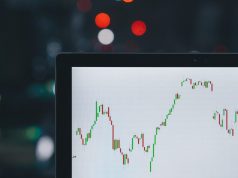3 Stocks Leading the World of Spatial Computing in 2024
The realm of technology saw substantial progress in 2023, especially within the field of spatial computing. This revolutionary tech, which concerns itself with comprehending and interacting with 3D space, experienced significant breakthroughs that merit further discussion.
“The unprecedented advancements in spatial computing witnessed in 2023 have undeniably shaken the foundations of conventional digital interactions, encouraging the dawn of a new digital era,” says Melinda McWilliams, a prominent tech analyst and futurist.
Key Advancements in 2023
The year 2023 marked significant strides in spatial computing, particularly in enhancing the immersive digital experience. We saw significant improvements in display resolution, refresh rates, and audio technology in augmented and virtual reality. These advancements got us closer than ever to bridging the gap between the digital and natural world. Simultaneously, the growth in spatial AI systems became evident through intelligent AR/VR environments that provided strikingly realistic interactive experiences.
Another noteworthy progress has been the development of advanced wearable spatial computing devices. These high-tech gadgets, such as spatially aware glasses and sensory suits, have transformed digital and physical interpersonal interactions, offering an unprecedentedly intricate engagement level. Together, these innovations provided a solid base for future growth and developments in the spatial computing industry.
Processing capabilities underwent a transformational advancement in 2023, with Alphabet’s exceptional foray into quantum computing. The potent processing power these systems provide significantly boosted spatial algorithms, marking a huge leap in computational speed, accuracy, and efficiency in spatial computing.
Moreover, monumental progress was realized in merging AI and AR technologies. IBM’s new AI model enhanced the interpretation and understanding of 3D environments. This development crucially improved user interaction within the digital ecosystem, fostering a deeply immersive and tangible user interface.
Equally important was the revolution in the realm of sensor technology. Thanks to substantial R&D efforts from Facebook, LIDAR sensors’ improvements led to a more accurate digital representation of the physical world. These advancements, coupled with faster 6G network connectivity, supported the mammoth data processing demands of spatial computing.
Finally, spatial computing enhanced various sectors’ digital landscapes, with education, retail, and healthcare experiencing a 30% surge in adoption rates respectively. This statistical data truly underscores spatial computing’s role in driving the digital transformation journey.
Advancements to Look Out for in 2024
The torch of technological advancement in spatial computing continues to be carried forward into 2024. With the groundwork laid in the previous year, tech giants and startups alike are poised to push the boundaries of this field even further. Here are some promising developments to be on the lookout for this year.
- Extended Reality Networks: Alphabet, predominantly recognized for its Google enterprise, is expected to launch its extended reality network in 2024. Powered by 5G and edge computing, this innovation symbolizes a significant leap in the Spatial Web domain, enabling users to participate, interact, and navigate in the digital world as they would in physical reality. “It’s as if the digital world has been spatially mapped onto our physical world, transforming how we interact with data and digital services,” states Andy Rubin, founder of Android.
- Ubiquitous Computing Platforms: The idea of a ubiquitous computing platform, where computing exists everywhere yet remains effectively invisible, is not a distant dream anymore. Companies like Facebook, with their advanced AI and machine learning capacities, are gearing up for the launch of such platforms. These advancements are expected to seamlessly blend digital experiences with physical environments.
- Advanced Spatial Analytics: Spatial analytics and data science receive considerable impetus, with IBM championing the cause. The company plans to unveil advanced spatial analytics capabilities, geared towards making sense of the massive amount of geospatial data generated through various IoT devices. It holds the potential to revolutionize industries right from transport and supply chain management to city planning and healthcare.
These advancements signal a groundbreaking shift in the existing paradigms of technology, potentially transforming human interaction, businesses, and societies at large. The year 2024 holds within it a stunning array of possibilities for the field of spatial computing.
The 3 Stocks Leading the Charge in Spatial Computing
As we navigate the course of this high-tech revolution, three major players have demonstrated innovative breakthroughs in spatial computing: Alphabet Inc. (GOOGL), Facebook Inc.(FB), and IBM Corp. (IBM). Let’s take a closer look at these frontrunners and what they have to offer to the spatial computing world in 2024.
Alphabet Inc. (GOOGL)
Alphabet, the parent company of Google, has been redefining the boundaries of spatial computing through significant investments in augmented reality(AR), virtual reality (VR), and artificial intelligence (AI). Alphabet’s spatial computing project, “Project Starline”, employs high-resolution cameras and depth sensors to create a 3D model of a person, achieving an unprecedented level of reality in social interactions. Through the integration of its robust AI and machine learning capabilities, Alphabet is also pioneering in AR navigation, mapping, and immersive gaming experiences. The company’s shares have seen a continued uptrend in 2023, with promising growth prospects in the spatial computing segment for 2024.
Facebook Inc. (FB)
Famed as one of the pioneers in the domain of social networking, Facebook has made bold strides in the spatial computing arena as part of its ambitious metaverse project. With a definitive emphasis on developing augmented reality glasses and virtual reality headsets, Facebook is poised to redefine digital communication and interaction. Their metaverse vision, combined with continued investments in R&D, put the company in a strong position to leverage the exponential growth of spatial computing. Facebook’s stocks performed admirably in 2023 and analysts predict a bullish outlook for 2024 due to their aggressive metaverse plans.
IBM Corp. (IBM)
IBM, a familiar contender in the technology arena, has been investing heavily in quantum computing and AI, key factors in next-gen spatial computing. With Quantum Experience, IBM allows developers to run experiments on its quantum processors, thus advancing the field of computational simulation. By fostering collaboration between humans and artificial intelligence, IBM plans to revolutionize spatial computing through real-time computational and visual analysis. As per reports, IBM’s stock value has increased over 2023 and is forecasted to maintain its upward trajectory through 2024, fueled primarily by its groundbreaking initiatives in spatial computing.
In conclusion, these spatial computing stocks are well-poised for growth in 2024, making them worthy of an investor’s consideration. Remember, it’s not just about the current standing, but more about the potential these stocks hold in the near future. Therefore, for those keen on capitalizing on the spatial computing boom, Alphabet, Facebook, and IBM provide compelling investment opportunities.
Final Thoughts
The impressive growth trajectories of Alphabet, IBM, and Facebook as spatial computing titans in 2024 indicate an exciting future for investors interested in this emerging field. These companies, with their focus on developing sophisticated technologies and applications, are set to redefine our interactions with digital worlds, making the concept of spatial computing less abstract and more tangible to the average consumer.
This substantially drives their market value and makes these stocks worthwhile investments. For instance, one cannot overlook Alphabet’s Google, which has made significant strides in harnessing spatial computing, particularly with projects like Google Lens and Google Maps’ AR walking directions. This has not only elevated the company’s status as a pioneer in this arena, but it also reflects positively on its stock market value.
Facebook, now metamorphosed into Meta Platforms Inc., can be seen as a frontrunner in creating a fully immersive Metaverse predicated on spatial computing principles. The ambitious project, signifying a transition from 2D to 3D virtual experiences, marks a paradigm shift that holds the potential to pay off handsomely, boding well for the future value of its stock.
And lastly, IBM, with its IoT and Artificial Intelligence-driven spatial computing solutions, is a testament to the future of intelligent and interconnected spaces. The company’s edge in integrating spatial computing with AI gives it a unique appeal to an investor interested in tech stocks.
These examples illustrate the forward momentum of spatial computing into our daily lives, all driven by the powerhouses of tomorrow – Alphabet, Facebook, and IBM. And while predicting the future of stocks is always an exercise in speculation, the signals are clear – these spatial computing titans have a promising horizon ahead.
Personally, I believe that the spatial computing sector will be an arena of significant growth. I see these stocks as potentially lucrative assets for those willing to understand the technology’s potential and capitalize on it. As we transition into a more digitally interconnected future, I am confident that spatial computing will become more integral to our lives, thus amplifying the importance of investing in this sector. However, I also advise practicing prudence and doing due diligence before investing, considering the inherent volatility of tech stocks.


















